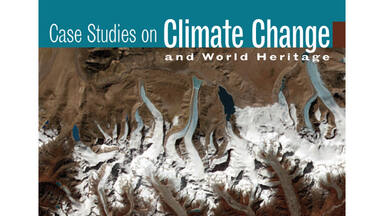World Heritage Committee adopts strategy on heritage and climate change
The World Heritage Committee on Monday adopted the recommendations on ways to respond to the threat of climate change to many World Heritage sites such as Mount Everest (Sagarmatha National Park in Nepal), Australia's Great Barrier Reef and Venice (Italy).
"This is the start of a long process, which is important in that it helps draw attention to a far reaching issue," explained the Chairperson of the World Heritage Committee, Ina Marčiulionytė, Lithuania's Ambassador and Permanent Delegate to UNESCO. "Clearly, the causes and the effects of climate change cannot be solved in terms of World Heritage properties alone. But it is our duty to do whatever we can to protect World Heritage in keeping with our responsibility to implement the World Heritage Convention. This is what we are trying to do by initiating `more studies and sharing experience."
The World Heritage Committee endorsed the recommendations formulated by 50 international experts on climate change who met at UNESCO Headquarters in March. The meeting was convened at the request of the World Heritage Committee and was financed by the Government of the United Kingdom and supported by the United Nations Foundation. It gave rise to the drafting of a report on "Predicting and Managing the Effects of Climate Change on World Heritage" and a "Strategy to Assist States parties to Implement Appropriate Management Responses."*
The Committee decided to request States Parties and all partners concerned to implement the Strategy so as to protect the outstanding universal value, integrity and authenticity of World Heritage sites from the adverse effects of climate change. It decided that sites affected by climate change could be inscribed on the List of World Heritage in Danger, on a case by case basis, and invited a study on alternatives to the Danger List for these sites.
The Committee further urged the World Heritage Centre and the Advisory Bodies (notably the International Council on Monuments and Sites, ICOMOS, and the World Conservation Union, IUCN), and States Parties to make proposals for the implementation of pilot projects at specific World Heritage properties, especially in developing countries, so as to define best practices for the Strategy.
Most natural ecosystems and heritage sites, both on land and in the sea, are at risk of being affected by climate change. They include: glaciers, coral reefs, mangroves, boreal and tropical forests, polar and alpine ecosystems, wetlands and grasslands. Examples of some sites so affected include the Kluane / Wrangell-St Elias / Glacier Bay / Tatshenshini-Alsek (U.S.A. and Canada), Huascarán National Park (Peru), Mount Kilimanjaro (United Republic of Tanzania), Ilulissat Icefjord (Denmark), the Belize Barrier Reef Reserve System (Belize), Waterton Glacier International Peace Park (U.S.A. and Canada).
Cultural sites are also in danger because of climate change. Rising sea levels are threatening coastal sites, such as the four World Heritage sites of London. Desertification is threatening some sites, such as the three Great Mosques of Timbuktu (Mali). Rainfall and temperature changes can cause structural collapse and population movements due to climate change are expected to lead to the abandonment of some sites while placing others under stress.
Furthermore, the Committee requested the World Heritage Centre to prepare a policy document on the impact of climate change on World Heritage properties in consultation with experts, conservation practitioners, international organizations and civil society to be presented to the World Heritage Committee in 2007. The draft policy document should include considerations on the synergies between conventions dealing with this topic, identify research needs, and address legal questions on the role of the World Heritage Convention with regard to suitable responses to climate change. It should also define links with other United Nations and international bodies dealing with this issue.
